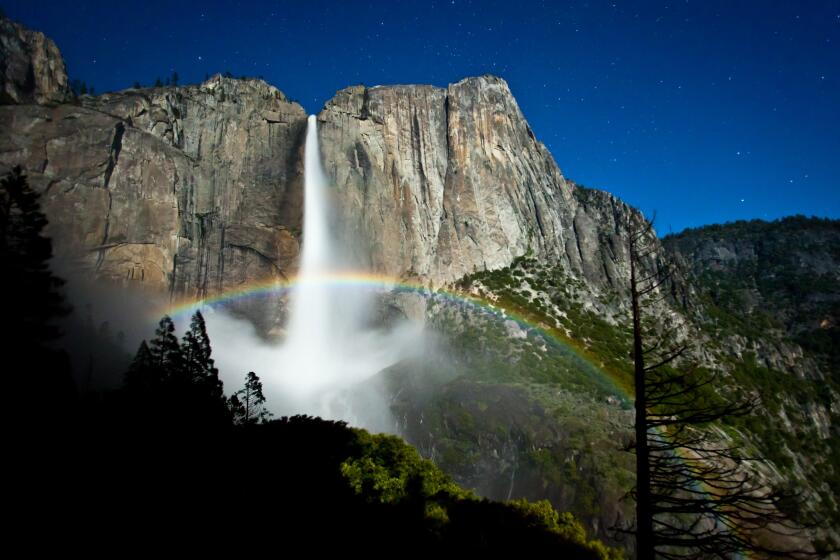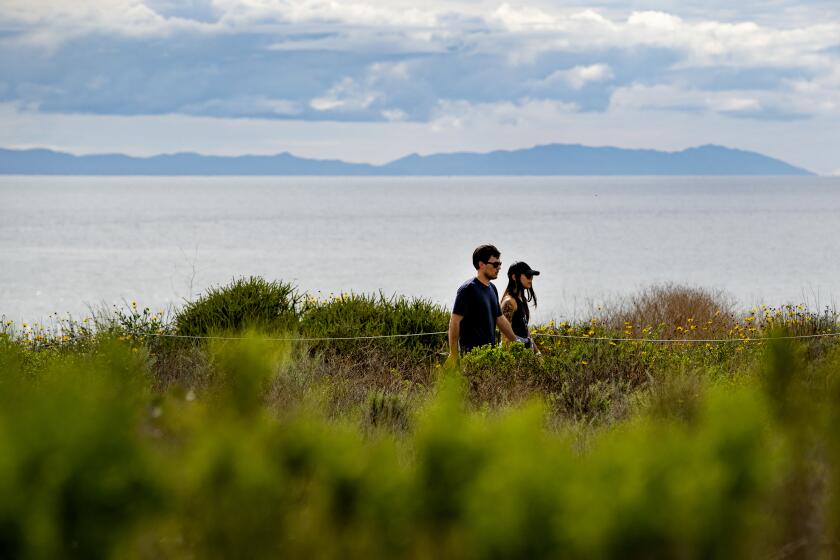Nagoya Odori to Bring Folk Dance to Little Tokyo
“Japanese traditional dance is like Japanese tatami mats,” observes Ukon Nishikawa, director of Nagoya Odori, the folk dance group that will perform at the Japan America Theatre in Los Angeles on Sunday. “ Tatami used to be very popular, but now no one has them in their homes.
“Although Odori is one of the most important traditional arts of Japan, I can’t say that it’s popular today. But maybe traditional culture is always like that,” says Nishikawa. Dressed in a brown kimono, he taps out counts on his thigh with a closed paper fan, leading a group of professional geishas through a rehearsal for a performance at Tokyo’s Kabukiza Theatre.
In a huge room that is covered with reed tatami mats and framed by white shoji screens, four dozen women in colorful kimonos dance to recorded shamisen music. With light skidding feet and carefully sculpted arms, the women create simple tableaux and patterns, responding to Nishikawa’s gentle prodding with determination.
Although he is director of the Nishikawa School of Japanese Dancing in Nagoya, Nishikawa--a handsome and thoughtful man in his late 40s--regularly travels all around Japan to teach special classes such as this one.
The Nishikawa School was established in 1842 by Koisaburo Nishikawa (no relation), who was then succeeded by Ukon Nishikawa’s father. When he died, his oldest son took over. In keeping with Japanese tradition, all 14 dancers on the American tour are now also named Nishikawa.
“In the early stage of Odori, there were no separate schools. But now, like a big river, it has many branches,” Nishikawa explains.
“When a dancer belongs to a certain school and acquires the proper technique and spirit, he can take the annual licensing examination. And then, if he passes, he takes on the name. There are about 3,000 Nishikawas around Japan and the world today. And maybe 1,000 of them are teaching now. Their students in turn, when they pass the examination, will take the name, too.”
In order to become professional dancers, students of Odori usually start their training at age 5 or 6 and continue studying almost daily for 10 to 15 years.
“The Japanese traditional arts require a spiritual element,” Nishikawa points out during a lunch break, as a tray of lacquered dishes is set down in front of him by an assistant. “So some dancers, after 10 years, might acquire the physical technique, but their spirit doesn’t follow, and they can’t express themselves.”
“That spiritual element is the most important. Japanese flower arrangement, for example, and the tea ceremony both require this element. It is a mental training.
“Besides spiritual training, dancers must study Japanese traditional music, and, because there are many elements of the tea ceremony in the dances, they should study tea also.
“And,” he adds, “as they have to move ‘in character,’ they must know the historical background of the stories. And because they wear kimonos on stage, they have to master how to dress and wear kimonos properly.
“In Japanese, to learn is manabu , which comes from maneru , which is to mimic ,” Nishikawa explains.
“If a child watches someone drink tea, he or she will drink it in the same way. So, at first, we teach a complete but very simple dance to beginners, so they can follow the teacher. This is unlike ballet, for instance, where there are basic patterns and forms that must be repeated over and over. In Japanese dance, the dancers learn right away to dance a piece from beginning to end. And if they can add their own personalities while mimicking the dance, then they can move forward as dancers.”
This system of learning by direct observation, and of personally passing down technique from teacher to student, is an ancient and well-established one in the Japanese performing and plastic arts, as is the passing on of the family name.
“It is possible to make videos and to write books, of course,” Nishikawa says. “But that is very dry, and you can’t give the warmth of your body, or your love that way.”
And while it is true that the Japanese classical arts aren’t nearly as popular as they once were, they are gaining recognition and appreciation outside of Japan.
“It’s important to travel and introduce our traditional culture to the world,” Nishikawa says. “Also, it’s the tendency of the Japanese people that, when something is appreciated abroad, then suddenly they decide it’s very important for them to keep it.
“And, as the very best teacher is the audience, this tour of America is important to the dancers. They will learn a lot.”
Rehearsal break is over, and the geishas return, filling the room with a lovely array of muted colors and the sound of swishing silk.
“So, in the future, besides mastering the physical and spiritual elements,” Nishikawa muses, “maybe the Japanese dancer should also learn to speak English.”
Sign up for The Wild
We’ll help you find the best places to hike, bike and run, as well as the perfect silent spots for meditation and yoga.
You may occasionally receive promotional content from the Los Angeles Times.



